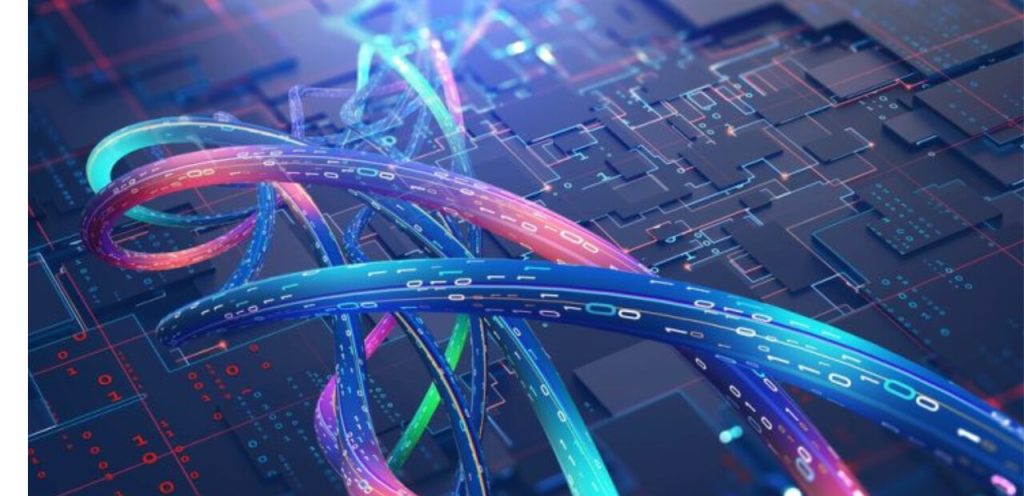AI is unlikely to completely replace embedded developers, as their role involves critical problem-solving and innovative design. Yet, AI tools may enhance efficiency in the embedded development process.
The future of embedded development hangs in the balance with the advent of advanced artificial intelligence. Speculations abound regarding the potential for AI to automate tasks across various domains, prompting many to question the job security of embedded developers. While artificial intelligence can streamline specific tasks, it cannot replicate the intricate and nuanced decision-making capabilities of human experts.
Embedded systems are complex, with a need for tailored solutions that account for real-world variability — a strength that human developers possess. The role of embedded developers evolves with technology, embracing AI to improve productivity and spur innovation rather than being supplanted by it. Consequently, embedded developers must adapt to a technology landscape where AI serves as a complement, not a replacement.
Understanding The Role Of Embedded Developers
Embedded developers sit at the heart of technology’s evolution, crafting the very fabric that connects our devices to the physical world. They are the silent architects behind the seamless operation of countless systems we rely on daily. From consumer electronics to life-saving medical devices, embedded developers play a pivotal role in shaping the technological landscape. Bringing hardware and software into harmony, they push the boundaries of innovation and functionality. Let’s delve deeper into what defines these experts and why their contribution is crucial in an increasingly interconnected world.
Definition Of Embedded Developers
Embedded developers are specialized software engineers who design, develop, and optimize software to run on embedded systems. These systems are integrated with the hardware they control, usually tailored for specific tasks or devices. Unlike general-purpose computing, where developers might focus on broad software applications, embedded developers interact directly with hardware through:
- Microcontrollers
- Microprocessors
- Sensors
- Other electronic components
They have a keen understanding of both hardware constraints and software intricacies, enabling them to maximize efficiency, reliability, and performance.
Importance Of Embedded Systems In Technology
The significance of embedded systems cannot be understated, as they serve as the backbone of modern technology. Their applications are diverse, running the gamut from simple to complex. For instance:
- Automobiles utilize embedded systems for engine control units, infotainment, and safety features.
- Medical devices employ embedded software to ensure accurate diagnostics and patient monitoring.
- Consumer electronics such as smartphones and smartwatches rely on embedded systems for user interfaces and connectivity.
- Industrial machines use embedded controllers for automating processes and enhancing productivity.
Embedded developers’ expertise ensures that these systems not only perform their intended functions but also do so reliably, safely, and efficiently—often with real-time constraints. To sum up, the role of embedded developers is absolutely integral to the advancement of technology. Their specialized skills enable our devices to act smarter, react faster, and offer the intuitive experiences we’ve come to expect. As technology progresses, the demand for these experts shows no signs of slowing down—an embedded developer’s skill set remains as relevant as ever in the AI era.
The Rise Of Ai In Technology
Advancements In Ai And Machine Learning
Artificial intelligence has grown exponentially, outpacing the wildest predictions of the tech luminaries of yore. Machine learning (ML), a core component of AI, has evolved astonishingly, optimizing algorithms to sift through immense data sets and discern patterns far beyond human analytical capacities. Neural networks, a ML paradigm modeled after the human brain, are particularly transformative, facilitating developments such as:- Deep Learning: Enables computers to learn from experience and understand the world in terms of a hierarchy of concepts.
- Natural Language Processing (NLP): Empowers machines to read and understand human language, opening up possibilities like real-time translation and sentiment analysis.
- Computer Vision: Allows systems to deduce information from visual inputs, vital for tasks ranging from facial recognition to autonomous vehicle navigation.
Ai’s Role In Automation
In the context of embedded development, AI’s role in automation cannot be overstated. By integrating AI into embedded systems, developers can empower devices to not only follow pre-set instructions but also to learn and adapt to their environments in real time. Key areas of AI-driven automation include:| Area of Automation | Impact on Embedded Development |
|---|---|
| Code Optimization | Algorithms that enhance efficiency and reduce power consumption without human input. |
| Predictive Maintenance | AI predicts device failures and schedules maintenance proactively, minimizing downtimes. |
| Data Analysis | Embedded devices process and analyze sensor data on-the-fly, yielding actionable insights. |
Ai’s Influence On Embedded Systems
Integration Of Ai In Embedded Devices
Artificial intelligence is revolutionizing embedded devices, enhancing their autonomy and intelligence. AI algorithms are now running on devices that once had just enough computational power to perform simple, straightforward tasks. Here’s how AI integration is reshaping the embedded universe:- Smart Sensors: Embedded devices with AI are equipped with ‘smart sensors’ that can interpret complex data, leading to more intuitive and responsive systems.
- Edge Computing: By processing data on-device rather than in the cloud, AI-powered embedded systems offer real-time insights, optimizing performance and reducing latency.
- Adaptive User Interfaces: AI enables adaptive user experiences, personalizing interactions based on user behavior and preferences.
Ai-powered Embedded Development Tools
AI isn’t just embedded within devices, it’s also empowering the tools used to develop them. A new breed of AI-powered development tools is emerging, streamlining the creation of advanced embedded systems. These tools offer functionalities that were once thought to be manual and time-consuming. Consider the following developments:- Code Optimization: Utilizing AI to analyze and optimize code ensures systems run efficiently on the limited resources of embedded devices.
- Automated Testing: AI-driven simulators and test suites anticipate problems before deployment, significantly improving reliability.
- Issue Resolution: With machine learning models, these tools can suggest solutions to problems detected in the code, enabling rapid development cycles.
Challenges Faced By Embedded Developers
Complexity In Embedded Systems Development
One of the most daunting elements of embedded systems is their inherent complexity. Contrary to typical application development, embedded systems intertwine closely with hardware constraints, requiring robust synchronization between software and physical components. This convoluted dance between the tangible and the intangible demands a meticulous approach that current AI solutions are yet to emulate perfectly.- Real-time operating constraints that necessitate precise timing and performance levels.
- Resource limitations, due to the small form factor, lead to challenging optimization problems.
- Multiple layers of system integration, from microprocessors to sensors and connectivity modules, all need seamless integration.
Skillset Requirements For Embedded Development
The skillset demanded by embedded development is both specialized and comprehensive. Developers need a firm grasp of not only software programming languages but must also understand the nitty-gritty of electronic design. They must be well-versed in:| Domain | Skills |
|---|---|
| Software |
|
| Hardware |
|
Ai Vs. Embedded Programming
Ai’s Potential To Automate Embedded Programming
Recent strides in AI suggest its burgeoning capability to automate complex tasks, including areas of programming. Specifically, in embedded programming, AI could:- Optimize code for better performance and efficiency.
- Introduce predictive maintenance, reducing system downtime.
- Enable advanced debugging, quickly identifying and resolving issues.
- Improve hardware interaction, potentially leading to more intuitive user experiences.
Limitations Of Ai In Embedded Programming
Despite the forward march of AI, numerous challenges persist in its application within the realm of embedded programming. Some of the key limitations include:- The necessity for domain-specific knowledge that AI may lack.
- Embedded systems often function in resource-constrained environments where AI’s resource demands can be prohibitive.
- The requirement for real-time performance and reliability that current AI technology may not guarantee.
- A potential lack of interpretability in AI decisions, which is crucial in embedded systems that interact closely with physical world.
The Future Of Embedded Development
Evolution Of Embedded Development With Ai
The fusion of AI with embedded development signals an era of unprecedented innovation. Embedded systems are becoming more intelligent, moving beyond basic tasks to undertake complex decision-making processes. AI offers a pathway for embedded devices to learn from data, adapt to new scenarios, and operate autonomously with minimal human intervention. Consider the following points:- Advanced machine learning algorithms now enable smart home devices to learn user preferences and automate processes accordingly.
- AI-driven predictive maintenance in industrial equipment can foresee failures before they occur, saving time and costs.
- Edge computing capabilities are being enhanced with AI to process data on-device, reducing latency and reliance on cloud services.
Potential Implications On Employment
The integration of AI into embedded development is not a harbinger of job displacement but rather an evolution of job roles. While automation may take over some repetitive aspects, the employment landscape is expected to burgeon with new opportunities that demand a blend of skills. Consider the implications:| Current Role | Future Skill Requirements | Opportunities |
|---|---|---|
| Embedded Software Engineer | AI algorithm development, Data analysis | New roles in AI-enhanced product design |
| Hardware Specialist | Understanding AI hardware accelerators | Growth in custom AI chip development |
| System Integrator | AI system optimization, Security | Increased demand for robust, secure AI systems |
Developing Ai For Embedded Systems
Ai Algorithm Development For Embedded Systems
At the heart of AI-enabled devices lies the bedrock of AI algorithm development. This process necessitates developers to think innovatively, crafting algorithms that are not only efficient but also congruent with the constraints of embedded hardware. Key considerations include:- Minimal memory footprint
- Low power consumption
- Real-time processing capabilities
- Highly optimized for speed and size
- Accurate and reliable in diverse conditions
- Easily updatable to adapt to new data
Implementing Ai Models In Embedded Devices
Implementation of AI models in embedded devices pivots on a seamless integration process that encompasses both hardware and software components. The endeavor is multifaceted, involving:| Stage | Action |
|---|---|
| Model Training | Training AI models with relevant data sets to achieve desired accuracy. |
| Model Conversion | Converting models into an optimized format suitable for embedded systems. |
| Deployment | Embedding converted models into the device firmware. |
| Testing & Validation | Ensuring the model performs accurately within the device’s operational environment. |
Ethical Considerations
Ethical Challenges In Ai For Embedded Systems
AI raises several ethical challenges, particularly when applied to embedded systems. As it evolves, developers and users alike grapple with questions that center on moral responsibility, autonomy, and the potential biases that could emerge from these systems. Embedded developers play a crucial role in addressing these ethical concerns since the intricacies of this domain require nuanced consideration of how AI algorithms affect the devices and people who rely on them. Transparency in algorithmic decision-making becomes not just ideal, but imperative.Impacts On Privacy And Security
The rollout of AI within embedded systems comes with significant privacy and security implications. With more devices connecting to the internet and each other, the surface area for potential breaches expands considerably. Embedded systems often control critical components in industries like healthcare and transportation, making them prime targets for malicious attacks. AI’s predictive capabilities can be leveraged to enhance security protocols, yet concurrently pose threats to individual privacy due to the detailed personal data it can process and store. Consequently, developers face the formidable task of constructing AI that upholds robust security measures while safeguarding user privacy.Upskilling For The Future
Importance Of Skill Enhancement For Embedded Developers
Stagnation is the enemy of progress, especially in a fast-paced domain like embedded systems. The importance of skill enhancement cannot be overstated. It ensures that developers not only keep pace with the latest technological advancements but also exploit them to innovate and improve existing systems. The fusion of AI and embedded development opens up a new world of possibilities, from smarter IoT devices to advanced robotics, all requiring a sophisticated understanding of both domains.- Adaptability: With technology evolving, staying adaptable is integral to career longevity.
- Innovation: Enhanced skills lead to better problem-solving techniques and innovative product development.
- Job Security: As AI becomes more prevalent, developers who can integrate AI into embedded systems will be in high demand.
Learning Ai For Embedded Development
For embedded developers looking to fortify their expertise, diving into the world of AI represents a vital step forward. Learning AI for embedded development not only provides an edge in the current market but equips developers with the tools to shape the future of technology. Starting with the fundamentals of machine learning and gradually advancing to complex neural networks, developers can progressively build their understanding of AI.| Area of Study | Significance in AI | Applicability in Embedded Systems |
|---|---|---|
| Machine Learning | Foundation of AI, enabling systems to learn from data. | Enhances automation in embedded systems. |
| Neural Networks | Emulates human cognition, allowing complex problem solving. | Used in advanced sensory and processing capabilities. |
| Data Analytics | Interprets substantial data sets for informed decision making. | Optimizes performance and efficiency in embedded devices. |
Collaboration Between Ai And Developers
Synergies Between Ai And Embedded Development
The melding of AI into embedded development creates a powerhouse of synergistic potential. AI algorithms excel in pattern recognition, predictive analysis, and making data-driven decisions, which can immensely benefit the field of embedded systems. Embedded developers, armed with AI, can streamline complex processes, foresee system failures, and optimize code for better performance and lower power consumption.- Enhanced Efficiency: Automating routine tasks with AI allows developers to focus on creative problem-solving and innovation.
- Data Handling: AI systems can process vast amounts of data from embedded devices, extracting actionable insights.
- Proactive Maintenance: AI predictive maintenance can foresee hardware failures before they happen, reducing downtime.
Collaboration Models For Ai And Embedded Developers
As the tech landscape evolves, so does the nature of collaboration. Modern frameworks are being designed to foster a seamless union between developer expertise and AI capabilities. This collaboration can take various forms, each aiming to enhance the embedded development lifecycle:| Model | Description | Benefits |
|---|---|---|
| Integrated Development Environments (IDEs) | New-age IDEs equipped with AI for automated code suggestions and error correction. | Increases code quality and accelerates development time. |
| Continuous Integration/Continuous Deployment (CI/CD) | AI-driven CI/CD pipelines for better build optimization and efficient release management. | Enables smoother and faster product iterations. |
| Predictive Analytics | Utilizing AI to predict outcomes and enhance decision-making in embedded systems. | Improves system reliability and performance. |
Impact On The Industry
Transformative Effects On Embedded Systems Industry
The embedded systems industry has historically revolved around meticulous programming and manual optimization. With AI on the rise, these traditional methods could see a significant overhaul. AI promises to introduce:- Automation: Repetitive and time-consuming tasks may be streamlined, allowing developers to focus on complex problems.
- Accuracy: Advanced algorithms could enhance precision in systems, reducing errors and improving functionality.
- Innovation: AI can drive creative solutions, possibly creating new uses and applications for embedded technology.
Economic Implications Of Ai In Embedded Development
The integration of AI in embedded development is not just a technical revolution; it’s an economic one as well. This integration stands to impact the industry’s economy through:| Aspect | Impact |
|---|---|
| Job Market | New roles may emerge for developers skilled in AI, while traditional embedded roles may evolve or decline. |
| Cost Efficiency | AI-optimized processes could lead to significant cost savings in development and maintenance. |
| Product Cycle | Shorter development cycles with the aid of AI could accelerate time-to-market for new products. |
Addressing Concerns And Misconceptions
Debunking Myths Surrounding Ai Replacing Developers
It’s crucial to confront the myths head-on. The first myth to dismantle is that AI has the capability to fully replace human expertise in embedded development. While AI can outperform humans in repetitive tasks, embedded development requires creative problem-solving and innovation—traits that are inherently human. Additionally, the nuanced understanding of hardware-software interactions, along with the ability to tailor solutions to specific requirements, remains a bastion of human developers.- Myth: AI is an independent solution that requires no human interaction.
- Reality: AI serves as a complement to human intelligence, often requiring guidance and supervision.
- Myth: AI can handle the complexity of embedded systems autonomously.
- Reality: Embedded systems feature a level of intricacy that AI tools are presently not equipped to manage independently.
Finding Common Ground For Ai And Embedded Developers
Recognizing the synergy between AI and embedded developers is fundamental. Far from being adversaries, AI acts as a powerful tool, augmenting the capabilities of professionals in the field. When embedded developers harness AI for tasks like code optimization or pattern recognition, they can achieve enhanced efficiency and precision in their work. Consider the following intersections where AI complements embedded development:| AI Contributions | Embedded Developer Roles |
|---|---|
| Data analysis and interpretation | Custom algorithm development |
| Automated testing and bug detection | System optimization |
| Predictive maintenance | Hardware integration and innovation |
The Intersection Of Human Intelligence And Ai
Leveraging Human Ingenuity Alongside Ai
It’s a partnership, not a replacement. AI brings to the table advanced analytical skills and the power of high-speed computation. Yet, human developers provide the creative spark that drives innovation. This collaboration leads to optimised problem-solving and elevates the development process to new heights.- Invention and creativity: AI can optimize existing algorithms, but human mind excels at producing unique concepts.
- Emotional intelligence: Developers understand the nuanced needs of users that AI might overlook.
- Adaptive learning: While AI learns from data, humans learn from experience, a combination that leads to smarter systems.
Optimizing Ai-assisted Development
With embedded AI tools at their disposal, developers can now achieve feats that would have been unthinkable a decade ago. The blend of human oversight with AI’s robust computation offers unprecedented efficiency in development cycles, meaning faster time to market and higher-quality products. Here’s how optimization pans out:- Code optimization: AI algorithms can quickly identify and rectify inefficiencies within embedded systems.
- Automated testing: AI can simulate and test millions of scenarios, reducing human error and ensuring more robust systems.
- Predictive maintenance: Embedded AI can anticipate faults before they happen, allowing developers to proactively address issues.
Projections For Ai And Embedded Development
AI’s advancement raises questions about its impact on embedded systems careers. Though AI is increasingly automating tasks, it’s unlikely to fully replace embedded developers due to the need for human ingenuity in complex problem-solving and innovative design.
Projections For Ai And Embedded Development
The intersection of Artificial Intelligence (AI) and embedded systems development is paving the way for transformative technological advancements. As companies continually seek improved efficiency and innovation, understanding the projections for AI’s role in embedded development becomes imperative. This synergy holds the potential to revolutionize industries by enhancing capabilities and creating new markets.Foreseeing The Evolution Of Embedded Systems With Ai
Embedded systems have long been a staple in various applications, from consumer electronics to industrial machines. The evolution of these systems is tightly linked to advancements in AI. As learning algorithms become more sophisticated, so too will the capabilities of embedded devices. We are currently witnessing a trend where embedded systems gain autonomy, predictive maintenance, and improved decision-making abilities through AI integration. Let’s explore some key areas where AI will likely lead this evolution:- Enhanced data processing on the edge to reduce latency and improve real-time responses
- Increased efficiency and adaptability in embedded devices, allowing them to perform complex tasks autonomously
- Integration of machine learning models to facilitate on-the-fly learning and adaptation
- Improved energy management and optimization through intelligent algorithms
Potential Growth Opportunities For Ai And Embedded Developers
The combination of AI and embedded development signifies ample growth opportunities for professionals in this sphere. As industries evolve, the demand for skilled developers capable of integrating AI into embedded systems will soar. This symbiotic relationship promises enhanced product functionalities and smarter solutions, which in turn will drive the following growth opportunities:- Career Advancement: Development of niche expertise in AI-embedded systems will be highly sought after, creating new career paths and leadership opportunities.
- Innovation: With AI, developers can push the boundaries of traditional embedded systems, opening doors to innovative applications and services.
- Market Expansion: The ability of embedded systems to solve more complex problems with AI creates potential for new markets and segments.
- Start-ups and New Ventures: Proliferation of AI in embedded systems provides fertile ground for tech start-ups focused on IoT, autonomous devices, and smart technologies.
Adaptability And Resilience
Navigating Changes In Embedded Development Landscape
The embedded development arena is undergoing rapid evolution as new technologies emerge. This dynamic environment demands that professionals remain acutely aware of the latest trends and tools. Developers must be both proficient in their use of traditional embedded system design and open to the acquisition of skills that align with modern methodologies, including AI and machine learning.- Continuous Learning: Staying abreast of advancements in programming languages, frameworks, and hardware.
- Flexibility: Ability to pivot between traditional development roles and emerging AI-driven scenarios.
- Innovation: Harnessing AI to optimize embedded systems, improving performance and efficiency.
Adapting To Ai Integration In Embedded Systems
Integration of AI into embedded systems presents both challenges and opportunities. While AI has the potential to automate certain aspects of embedded system development, it also opens avenues for enhanced functionality and smarter systems. Developers can adapt by focusing on design aspects where human insight is paramount and using AI as a tool to accentuate their capabilities rather than replace them. Developers can:- Embrace AI as a , allowing more time for creative and complex tasks.
- Develop AI-augmented tools that improve system diagnostics and maintenance, contributing to more reliable and self-sustaining systems.
- Learn to create symbiotic systems where AI and human expertise intersect to deliver superior outcomes.

Credit: graphxhub.com
Future Skills And Competencies
Required Skills For Future Embedded Development
The core competencies for future embedded developers will likely revolve around a mix of traditional engineering principles and advanced technological proficiencies. Mastery in the following areas will be essential:- Programming Languages: Expertise in languages such as C/C++, Python, and Rust, with an added emphasis on mastering AI-related programming paradigms.
- AI and Machine Learning Fundamentals: A solid foundation in AI principles, machine learning algorithms, and their implementation in hardware.
- Security: With connected devices on the rise, robust knowledge of cybersecurity methods to protect against potential attacks.
- Hardware-Software Integration: An ability to integrate AI algorithms with hardware components seamlessly.
Embracing Ai Technology In Embedded Development
To stay competitive and efficient, embracing AI technology in embedded development is not just beneficial; it’s becoming essential. AI offers versatility, speed, and efficiency in problem-solving and can optimize embedded systems in ways previously unimagined. This integration demands developers to be proficient in:- Machine Learning Libraries and Tools: Familiarity with libraries like TensorFlow and Keras, as well as edge AI tools.
- Data Analysis: Skills in big data technologies and the ability to analyze and interpret complex datasets to improve embedded systems.
- Collaborative Development: Working knowledge of collaborative tools and methods, such as version control with Git and Agile development frameworks.
Developing Future-proof Solutions
Strategies For Building Resilient Embedded Systems
To secure a position in the rapidly advancing tech landscape, embedded systems must demonstrate resilience. Building resilient embedded systems requires a thorough understanding of both present requirements and future trends. Below are strategies that can help achieve this goal:- Modular Design: Creating systems with interchangeable parts or modules that can be easily updated or replaced, minimizing the need for a full system overhaul.
- Adaptive Software Architecture: Developing software that can adapt to new hardware improvements, changing specifications, or even completely new sets of data.
- Embracing Open Standards: Using open interfaces and standards to ensure compatibility with a wide range of components and systems, facilitating integration and interoperability.
- Continuous Learning: Establishing protocols for ongoing education and training in new technologies to keep skills of embedded developers sharp and current.
Integrating Ai For Future-proofing Embedded Solutions
Tapping into the power of AI presents a promising avenue for enhancing embedded solutions. Here’s how integrating AI can help ensure that embedded systems stay ahead of the curve:| AI Integration Approach | Benefit |
|---|---|
| Real-time Data Analysis | Enabling systems to make decisions and adapt to changes without human intervention. |
| Predictive Maintenance | AI can forecast potential failures, recommending maintenance before issues occur, thus reducing downtime. |
| Enhanced Security | Utilizing AI to recognize patterns and detect anomalies can lead to stronger defense mechanisms against cyber threats. |
| Energy Efficiency | AI optimized processes can minimize power consumption, leading to greener and more cost-effective solutions. |
Collaborative Innovation In Embedded Development
Harnessing Ai For Collaborative Embedded Innovation
The integration of artificial intelligence into embedded systems development is not simply a trend; it’s a transformative shift. AI algorithms can analyze vast datasets, predict outcomes, and automate complex tasks, freeing up human developers to focus on creative and innovative aspects. This collaborative effort enables:- Efficiency gains in time-consuming tasks such as code review and debugging
- Advanced predictive maintenance within IoT ecosystems
- Accelerated product development cycles, delivering faster time-to-market
Enabling Cross-disciplinary Development Approaches
Cross-disciplinary collaboration emerges as a vital component of modern embedded development. By incorporating expertise from diverse fields such as data science, machine learning, and traditional embedded programming, development teams can:| Development Aspect | AI-driven Enhancement |
|---|---|
| Design Optimization | Utilizing AI for predictive modeling and simulation |
| Code Generation | Automating routine coding tasks to reduce human error |
| Testing & Validation | Accelerating testing processes through intelligent automation |
Conclusion And Reflections
Concluding Thoughts On Ai And Embedded Developers
The interplay between AI capabilities and the ingenuity of embedded developers has revealed a symbiotic relationship rather than a dichotomous one. While the automation of certain tasks has advanced, the notion that AI could fully replace embedded developers oversimplifies the complexities inherent in embedded systems engineering. Here are key takeaways:- AI streamlines processes: It is undisputed that AI has automated routine aspects of coding and testing, enhancing efficiency in the development cycle.
- Human expertise is irreplaceable: The creativity and problem-solving skills of human developers in tackling unforeseen challenges and design nuances remain essential.
- Collaborative integration: Rather than replacement, a more accurate forecast is that AI will increasingly become a tool that developers leverage to heighten their work.
Reflections On The Future Of Embedded Development
Looking ahead, the landscape of embedded development is poised to undergo significant transformation, shaped by the progressive integration of AI. As we envision the future, several points stand out:| Aspect | Impact of AI |
|---|---|
| Enhanced tools | AI-driven software will offer sophisticated analytics and predictive capabilities, empowering developers with better tools. |
| Continuous learning | Developers must continuously update their skills to harness AI’s potential effectively and remain relevant. |
| New roles | As AI handles more tasks, developers will assume new roles focused on oversight, strategy, and AI collaboration. |
Frequently Asked Questions Of Will Ai Replace Embedded Developers?
Will Developer Jobs Be Replaced By Ai?
AI is not expected to fully replace developer jobs but will likely change their nature, automating some tasks and enhancing developer productivity.
Can Ai Write Embedded Code?
AI can indeed generate embedded code, but its effectiveness varies. Human oversight is crucial for ensuring the code’s correctness and safety in practical applications.
Does Embedded Systems Have A Future?
Embedded systems have a bright future due to their integral role in IoT, smart devices, automotive innovation, and healthcare technology advancements. Demand is rising as more industries adopt automation and connectivity solutions.
Is Ai Used In Embedded Systems?
Yes, AI is increasingly integrated into embedded systems for tasks such as data analysis, machine learning, and pattern recognition, enhancing their capabilities.
Can Ai Technology Replace Embedded Developers?
AI technology is not yet advanced enough to completely replace embedded developers. It is currently used to assist them in optimizing and debugging code, but human expertise remains irreplaceable for creative problem-solving and innovation in embedded systems.
Conclusion
The future shines brightly for embedded developers, with AI supplementing rather than supplanting their expertise. Embracing AI tools can enhance efficiency and innovation, securing their invaluable role in tech’s evolution. Ultimately, AI is a partner, not a replacement, in the intricate dance of technological advancement.










